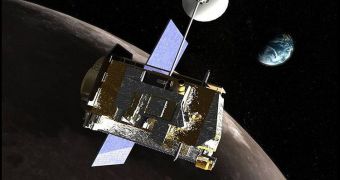During a luncheon sponsored by the Planetary Society on September 9, three avid science advocates told members of Congress that funding for space exploration should continue despite the financial hardships that the United States are currently facing.
While the tough economic times that lie ahead are dangerous, they should not deter officials from continuing their support to space exploration, in particular the visiting of other worlds by robotic spacecraft. During the meeting, NASA had a lot to show for itself.
Over the past year, it achieved a number of tremendous milestone, including visiting two comets via the Stardust NEXT and EPOXI missions in February 2011 and November 2010, respectively, the launch of the Juno mission to Jupiter and the launch of the GRAIL mission to the Moon.
Another momentous achievement was the insertion of the MESSENGER spacecraft into orbit around Mercury, the first time this has ever been achieved. Over the next months, NASA will also launch the Mars Science Laboratory (MSL) rover Curiosity, which is about the size of an SUV.
The panel that presented these achievements was made up of NASA Planetary Science Division Jim Green, Cornell University professor and Mars Exploration Rover (MER) principal investigator Steve Squyres, as well as the executive director of the planetary society, Bill Nye.
“Budgets are being cut. You have to make hard choices. But we just want to emphasize the great value of planetary science. We've made discoveries that change the world, change our view of what I like to call our place in space,” Nye said, as quoted by Space.
“There's just been a whole series of mission events that are stacking up over this last year that have just been phenomenal. Each and every one of these things are rewriting the textbooks,” Green added, in reference to the string of successful mission NASA has had over the past 12 months.
“The best science is always going to be done with returned samples. There is no way you can match the kind of scientific quality that exists in state-of-the art labs on Earth,” Squyres said, speaking about planned sample-return missions to Mars, and potentially beyond.
What the three scientists need to agree upon is that more people need to be involved in planetary science missions. Only a few hundred individuals show up when robotic spacecraft launch to the sky, whereas a shuttle launch would gather hundreds of thousands to Florida.
“It's important to let people know what these missions are all about," Green said. "It's not always about the shuttle. This is the era of planetary science. It's going to be a while before humans leave Cape Canaveral [again], but we're going to be continually launching missions, exciting missions, to fabulous places,” Squyres concludes.

 14 DAY TRIAL //
14 DAY TRIAL //